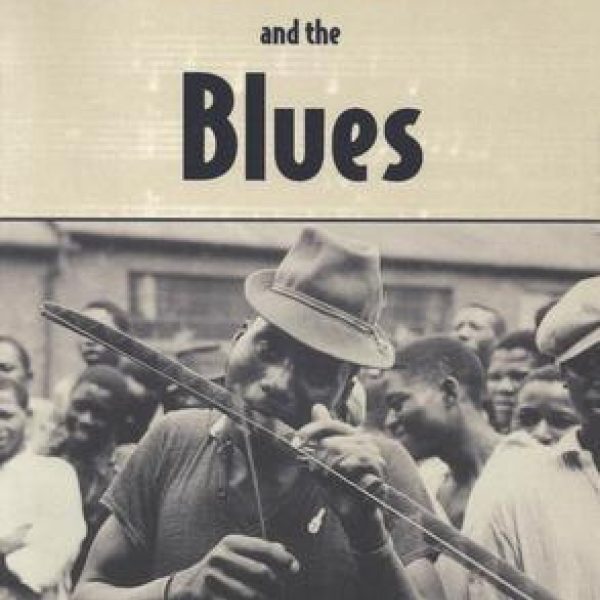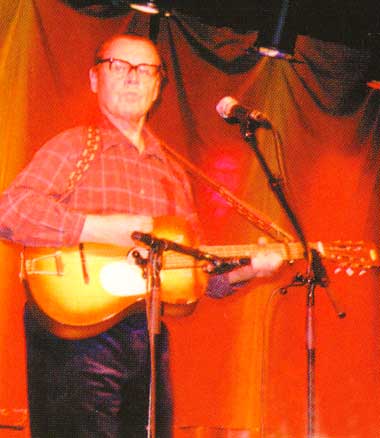
Gerhard Kubik is a professor of Cultural Anthropology at the University of Vienna. He has been researching African and American music for nearly half a century, and is widely published in many subjects. He is also a performing musician, currently playing guitar and clarinet in Donald Kachamba’s Heritage Jazzband, which specializes in kwela and other southern African styles. Gerhard’s longtime collaborator in the field, Moya Malamusi of Malawi, also performs in the group. Afropop Worldwide spoke with Gerhard about his provocative book, African and the Blues (University of Mississippi Press, 2000). In the past, we have done programs, such as Blues Reflections, highlighting this subject as viewed by contemporary musicians. As a scientist and historian, Gerhard has a somewhat less romantic, but highly illuminating, viewpoint on the subject. So, in this program, we give him the floor. Here is a transcript of our complete conversation in April 2007. A number of the musical examples Gerhard mentions here can be found on the CD of music to accompany his book. It’s not easy to find, but worth looking for: Africa and the Blues: Connections and Reconnections (Neatwork, 2001. AB 101, BARCODE: 120006 949996)
B.E: Welcome, Gerhard. Why don’t you introduce yourself and give us an overview of your work with African music and blues. I know it is vast, but give it to us in broad strokes?
G.K: I was about 11 years old at the end of World War II when I became attracted to American jazz through broadcasts by the US Air Force radio in Europe and in dance clubs, which the American army had organized for local kids. We were living in the American Occupation Zone in the western part of the city of Vienna. First, I got hooked on Glenn Miller’s music mainly through the film “Sun Valley Serenade,” but very soon I switched to modern jazz and my favorites included Charlie Parker, Dizzy Gillespie, John Lewis, but also the young Stan Getz in Woody Herman’s Second Herd with a priceless recording of the four saxophones by Zoot Sims, Herbie Steward, Serge Chaloff, and Stan Getz in “Four Brothers,” and also Getz’s solo in Ralph Burns’s composition “Early Autumn.”
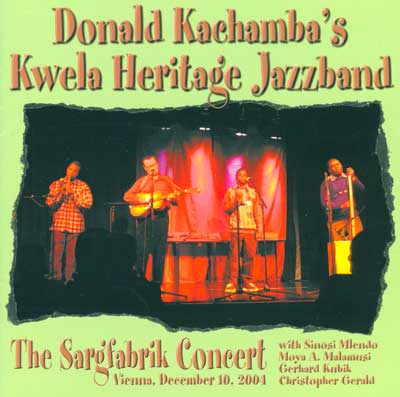
That was my world when I was about 14, 15, and 16, and I began to learn clarinet and then the alto saxophone. So we could say that my introduction to the blues was through jazz, especially also Charlie Parker’s handling of blues harmonic patterns in his many blues-based compositions. One of my favorite recordings was “Parker’s Mood,” recorded in New York City, September, 1948. That captures the feeling that got me involved.
My first trip to Africa was in 1959, hitchhiking and walking all the way from Europe to East Africa, then Central and West Africa. The trip took one year and the idea behind was to search for the African roots of blues and jazz. I was hitchhiking and walking all the way from Yugoslavia, through Greece, then Egypt, Sudan, until I reached Uganda, where I became a student of the famous court music xylophone teacher Evorista Muyinda. From 1959, only interrupted by my studies at the University of Vienna, and later my teaching commitments, I’ve been in and out of Africa all the time. I’m spending five to six months every year on field trips, and I’ve just returned from a new field trip, six weeks in Uganda.
B.E: It’s interesting that your travels were initially aimed at finding the “roots” of blues and jazz, because in your book, you take issue with the notion of “roots of the blues.” What is the problem with this popular formulation?
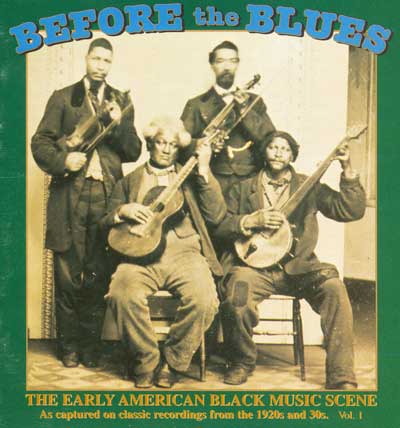
G.K: At the end of my university studies in cultural anthropology, I had outgrown the concept of roots—not only with reference to blues, but with reference to anything. As a scientific term, “roots” was tenuous. It is a concept poorly suited for historically-oriented studies. In African and African-American history, as with history from elsewhere in the world, we have to operate from sources: written sources, oral sources, recorded sources, and—if possible—archaeological sources. Where there are no sources, there can be no safe conclusions. “Roots” is too vague to be used beyond casual statements that such and such tradition is based on something, somewhere. For example all the talk about roots of the blues in Mali is just enough to satisfy the public’s need for wild imagination. But we want to know which traditions, by whom in Mali or elsewhere, and in which time period—late 18th century?—were relevant as a background for the rise of blues in the US a century later. Popular formulations such as “From Mali to Mississippi” are anathema to historical studies.
The roots concept also has an ideological undertone. It implies that you can study at one culture with the light of history, while the other cultures are just “roots” to the former, a repository of stagnant, centuries-old tradition. The concept insinuates that one continent is a provider of musical raw material to be processed somewhere else. Now to us in Africa, this is not acceptable. We are not roots to anyone.
Why is there nobody talking about the jazz roots of South African urban music, for example? Here, people prefer to speak of “influences.” I have discussed some of these questions with our guitarist and singer Sinosi Mlendo, who sings many blues in our jazz band in Malawi. He would never claim to be the “roots” or the “source” of anything, but simply explain how he became interested in jazz through his uncle Donald Kachamba, and how he is trying to create his own music.
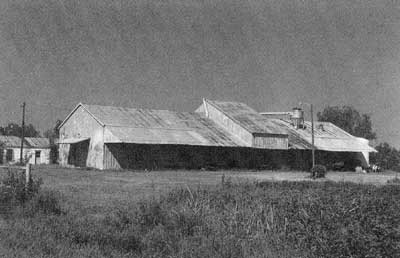
B.E: You have also worked quite a bit in the American south, haven’t you?
S.M: Yes. We have been working as a team, involving David Evans as a team from the University of Memphis, and also my colleague from Malawi, Moya Malamusi. We traveled together and visited blues musician’s in the 80s, and also in the 90s. That was the basis of my book Africa and the Blues.
B.E: Speaking of the book, I’d like you to read a paragraph from your conclusion, first full paragraph on page 203.
G.K: All right. “The people who were transferred from the Carolinas, Virginia, Georgia, and elsewhere to Mississippi and the other news southern territories during the first decades of the 19th century were carriers of the neo-African musical culture that presented a selection of traits from quite distinctive African regions. Under the new social circumstances, it then turned out that individual music has a better chance of surviving in the social climate where the African community spirit had been targeted for suppression. The new forms also expressed the new mood. In this process, culture traits from the west central Sudan belt gained wide currency in rural areas of the deep South, because they responded best to the new sociopsychological situation. Among the various new traditions that arose one was the blues. The bearers of these developments, however, were probably a minority within the population of African descendents on the farms. But there stylistic seeds began to sprout, while others seeds were doomed.”
Well, that is the paragraph as I wrote in the book. I might add that comparative research in many other places in the world, such as South America, point to the fact that sometimes it's just one person who is instrumental in transmitting a tradition, and what that person plants becomes important in the development of a new style. So it could be that there were just a few people from the sahel and savanna zone of West Africa who became instrumental, and finally, their tradition somehow became the seeds of something new—to be developed in the deep South.
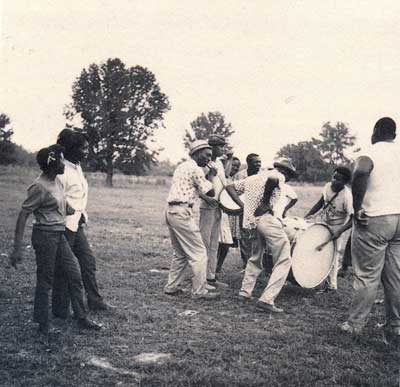
B.E: That’s interesting. I was speaking recently with Markus James, an American musician doing some collaborative work in North Mississippi, and he remarked at the way family musical traditions are still so strong there. For example, the family of Othar Turner, the fife and drum legend, still carries on his work. To Markus, it felt just like Africa in that way.
S.M: The families, yes, that is very important. You see, we believe now that many African traits were transmitted in the Americas within families. For example, yes, Othar Turner. There were intra-family traditions one could say, and later they came out when the situation became fertile in a sense. Then these traditions came out and became well known in larger areas, and so on, depending on circumstances. And there may be more intra-family traditions in America, which have not yet come to the surface.
B.E: Coming back to your quote, could you talk about the “suppression” of the African community spirit in this setting?
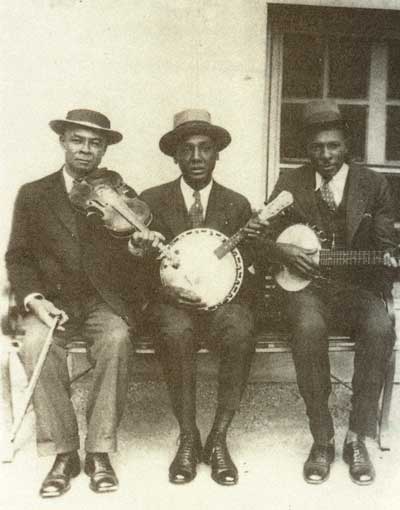
G.K: There are abundant historical data to suggest that African Americans on the Mississippi plantations had much less freedom than, for example, African Americans in Brazil in Rio de Janeiro, where they used to walk around in the city on Sundays playing Angolan-type lamellophones and scrapers. In the rural areas even drums were tolerated, and by the 1820s, Afro-Brazilian community spirit included what clearly was training for insurrection: I mean Capoeira. I have discussed the relevant sources in my book Angolan Traits in Black Music, Games and Dances of Brazil. This contrasted with the life in captivity on the farms of the so-called Deep South, by which we understand the vast territory from central Georgia to East Texas and up the Mississippi River. An exception that was the culture of New Orleans in the early and mid-19th century as described by George Washington Cable and others. That was an urban mix, and there was drumming.
B.E: Let’s review a little social history to set the scene. How did America change for African slaves after the revolutionary war ending in 1783?

G.K: I doubt that America changed very much for African slaves with the peace of Versailles, and the end of the British Atlantic Empire. And yet, although the loose confederation of eastern seaboard states had its own problems, expansion to the West began almost immediately after 1783. But the incisive change for many African Americans and newly imported Africans—some of them were brought over clandestinely—was the Louisiana Purchase in 1803. The $15 million Napoleon Bonaparte got for selling his French-speaking bridge-head in America was also, in a sense, a large ransom for economic development. The emerging cotton plantation economy then caused large-scale second and third generation resettlement of African slaves from the eastern seaboard states and elsewhere. In that way, the Louisiana Purchase was an unintended stimulant for cultural developments, leading to the rise of novel African American forms of music later in the 19th century: jazz in New Orleans and blues in the Mississippi Delta and elsewhere.
B.E: Few people know that near the end of the US slave importation days, Mozambicans and Angolans were brought here. Would you talk about that, possibly in conjunction with Alan Lomax’s 1959 mouthbow recording?

G.K: The relevant written sources were discovered relatively late. I have cited one in my book Africa and the Blues. No doubt, with Angolans and Mozambicans, a stylistic element from Southwest and Southeast Africa was superimposed on existing traditions in certain parts of the US. In an article I wrote on Eli Owen’s mouth bow, published in Jacqueline DjeDje’s book Turn Up the Volume (Los Angeles, 1998), I tried to do a trait-by-trait analysis. The result was that the traits defining Eli Owen’s technique and style point to several directions, including Angola. However, there is very little evidence to suggest that Angolan descendents had a significant share in the rise of blues, in contrast to Mozambicans from north of the Zambizi, a notable area of Arab slave trading and a culture that had absorbed much from the Indian Ocean trading networks since the 10th century A.D. Northern Mozambique had been the home of fascinating fiddle players, and it is an area of blues notes. Why is it that one of the greatest mid-20th-century singers of Southeast Africa, Limited Mfundo, sounds so blues-like to many Americans? Limited Mfundo, from South East Africa, had learned his vocal style from his uncle who was a fiddle player. Moya A. Malamusi and I recorded one of his mourning songs on February 22, 1984, in his village in the Lower Shire Valley. The Shire is a tributary of the Zambizi River.
B.E: What do we think is the origin of the slide guitar technique? And what are its possible African precedents?
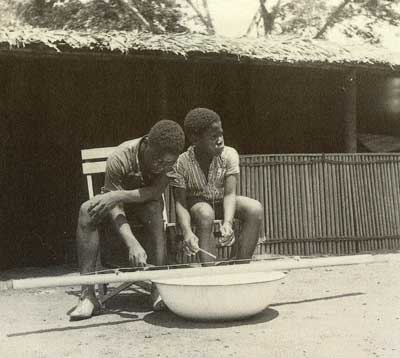
G.K: The remote history of the slide guitar technique is now pretty well known. In fact, my colleague David Evans at the University of Memphis and I have written a book on the subject. It is still unpublished. In brief, the use of a slider for stopping a string, thereby creating a glissando sound, is an age old African discovery in the so called Raffia zone of West-Central Africa. This is a forest area where the Raffia palm is a most useful plant for making household utensils, chairs, tables, beds, and musical instruments. Among the latter are so-called mono-ideochord zither’s. Ideochord means that the entire instrument is made from the same material. These are instruments made from the length of a raffia leaf stem from which a single string is peeled off. Nowadays it is a children’s instrument. One boy strikes the strings with two sticks, the other changes the pitch using a knife as a slider.
Both instrument and technique were exported with the slave trade to other parts of the world—for example, to Venezuela, where the locally made carangané is virtually identical to the central African models. In the US, it turned from ideochord to heterochord, meaning that the string was made from a different material. The single string is a wire or mounted either to the wall of a house or on a length of board. It is played solo. Eddie One-String Jones, Glenn Faulkner, and many others have provided good recordings of the African-American derivatives. The technique of slide guitar playing arise from the experience of central African mono-ideochord and mono heterochord zithers. The technique was transferred by sailors to the guitar. They were traveling to many parts of the world, taking their knowledge with them. In Hawaii, it developed into the so-called Hawaiian guitar, which became popular in the 1920s. Records of Hawaiian guitar music were also sold in southern Africa during the 1940s, and local African guitarists would reproduce the sounds with a slider technique they remembered from the monochord zithers. In Zimbabwe, South Africa, and Malawi, the style was called hauyani. The word comes from “Hawaiian.” In 1967 we recorded in Malawi the marvelous Daniel J. Kachamba playing slide guitar in the hauyani style.
B.E: Let’s turn to a more literary side of this subject. The preoccupation with the “devil” and Robert Johnson’s deal at the crossroads hides deeper realities. Talk about what gets overlooked in this conversation.

G.K: You are asking the right question, because you might know that I am also a psychoanalyst. So to me it appears that human psychology is what has been overlooked by those writers who talk about Robert Johnson and his pact with the devil. With some empathy, one can reconstruct the world and a few personal feelings of Robert Johnson. He was living in a social environment full of beliefs in the supernatural and fear of sorcery. This is clear from the imagery in his songs. But these ideas had to be articulated in terms of Christian symbols, or through veiled references to other beliefs. Monotheistic religions have a general tendency to call the transcendental beings of all other belief systems idols, devils, etc. Johnson had to use the language of his time. The idea of a pact with the supernatural, in order to increase a person’s power and success in life, is a theme familiar both from European and African folklore. In West and Central Africa, it is usually a female spirit, the Mami Wata, with whom a musician can enter a liaison in order to be successful, and of course after some years, so goes the saying, Mami Wata will lure him into the sea to die. This is meant to explain an artist’s unusual rise to fame and early death. There is a famous Nigerian highlife song of the 1960s by Victor Uwaifo that says, “If you see Mami Wata, if you see Mami Wata, never never you run away…” The guitar that imitates the mermaids reply.
Johnson’s pact with the devil is in interpretation by his contemporaries to explain the mysteries of his rambling life and his early death. The underlying thought model could be West African, analogous to the Mami Wata myth, but clad in Christian mythology involving the devil and the idea of the “crossroads” common in European folklore. I don’t think that Finn and Spencer were right in their references to Legba. Legba, a prominent vodou in the Fõ culture of the home May, is a helpful spirit, a guardian, warning the community about dangers. My Togolese friend Amagbenyõ Kofi, has researched these ideas in detail.
B.E: You cite about the blues’s “non-preoccupation with religion.” Explain that.

G.K: I mean that blues musicians did not create their songs and poetry in order to preach and spread religious ideology; they created them to express individual problems and misfortunes for others with similar experiences to understand and share. Blues singer CeDell Davis, one of the last Delta bluesmen, said in an interview for the International Herald Tribune, April 22, 2001, “The blues tells a story… about women, men, trains, buses, cars, birds, alleys, stories. The blues is about things.” Obviously, there is a difference in motivation and intent between a gospel choir and the blues singer. This is why blues was always a bit suspect for Christians, and they called blues the “devil’s music.” That blues musicians proceeded from a worldview incorporating belief in the supernatural does not make their music explicitly religious. There are texts which a Christian faithful to the dogma would find to be a heresy. Blues musicians clung to a wide range of popular beliefs shared with the broader population of African descent. “Hell Hound on My Trail” is one of Robert Johnson’s greatest hits describing his experience of persecution by sorcery. And Skip James with his timeless rendering of “Devil Got My Woman,” recorded in 1931, only borrows the Christian symbol to express that his woman was under a spell. It’s interesting that words like the “devil” and “women” always coincide with the upper blue note [the flatted 7th], while the word “ran” (representing the singer) coincides with the fundamental, tectonic, expressing ego’s centrality in the blues.
B.E: You point out that even a single, very talented, individual musician can have dramatic, disproportionate impact. You also point out that “Cultural reinforcement of any of these song traditions by newcomers cannot be excluded, until at least the mid-nineteenth century.”
G.K: It is normal that individuals determine history’s direction—be it political or art history. It is not the museum. In European art history, this was acknowledged long ago, and there is no reason why Africa should be an exception. For this reason I was warning readers in my book about mapping population numbers against successful cultural traditions. Sometimes it is a minority culture that makes a breakthrough and then becomes the majority culture. There is good reason to assume that many of the Arabic-Islamic stylistic traits that were processed in the Bentonia style—and generally in the Mississippi Delta blues—were introduced by a few individuals who had perpetuated a certain way of declamatory singing, wavy, ornamental intonation and pentatonic tonal systems within their families.
B.E: You assert that the birthplace of blues is the US in the 1890s. Make the case briefly.
G.K: We don’t know what the kind of music that would later be called blues sounded like originally. But African Americans began to try their hands on the guitar—before that it had been the banjo—soon after the Civil War, at first imitating the current, 19th-century popular music. They imitated ballads and other European country folklore. That is how three common chords got into the blues. The stage was set by African-American soldiers participating in the Civil War. There is a precious photograph of a minstrel show they staged during that period or later, with one guitar and two banjos. Then some younger, second-generation African American guitarists began to introduce the tonality of field hollers and other former slave folklore into their guitar-accompanied music. They were highly successful. But they had to find ways of adapting these different tonal-harmonic systems to each other. The field-holler tonality could easily be backed up with tonic and sub-dominant chords, but not with the European dominant chord and its leading note. The dominant chord had to be modified or omitted or substituted. And so we get through blues and jazz history the problem of what to do with the dominant chord. They rejected it. You can listen to bebop. All the time, it's being substituted by something else. Bebop has blues tonality. It's not Schönberg’s tonality.
In any case, these experiments were probably complete at the turn of the century—about the time when Ma Rainey became fascinated with the melodic patterns sung by an unknown girl behind the tent of her variety show. W. C. Handy also had similar encounters with blues tonality and with traveling guitarists on countryside roads.
B.E: What does the absence of time line patterns in older forms of African American roots music tell us?
G.K: The absence of asymmetric timeline patterns such as [SINGS “kon, kon, kolo, kon kolo”] etc. and some of the older forms of African American music in the United States—notably the blues—can be interpreted in various ways. But we should not forget that, in New Orleans, timeline patterns were not completely absent. There are three hypotheses to explain their absence in the blues. One is that most of the African traits converging in the creation of the blues ultimately came from the savanna and the sahel zones of West Africa, where timeline patterns are not prominent. Another is that living conditions on the farms in the Delta South tended to discourage Guinea coast traditions in which drums and timeline patterns are prominent, so the carriers of other styles took over. A third hypothesis is based on the fact that blues guitarists started off imitating ballads and other music of the master with simply divided rhythms. When field-holler tonality was introduced, it did not require a radical modification of these rhythms.
B.E: In Chapter 5 of your book, you have some fascinating back-to-back musical examples from Africa and the United States.
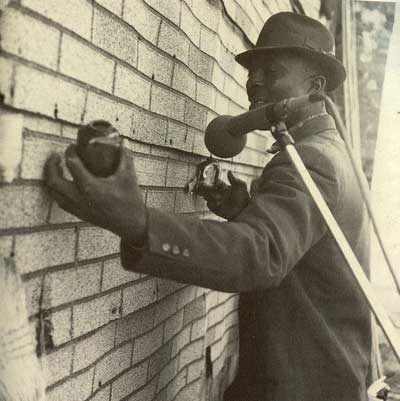
G.K: Yes, I tried to juxtapose blues recordings made in the 1930s and some of my own field recordings in rural areas of northeastern Nigeria and central Cameroon made in the early 60s. This was not to claim that such comparisons are historically conclusive but to introduce trait-by-trait analysis. One can easily get carried away by enthusiasm. Once in a lecture in Chicago I played for the audience the grinding stone song the Tikar woman I had recorded in 1964. I pointed out that the melodic patterns of the song very much resemble some of those found in the blues, and that her grinding displays a fantastic sense of swing. An African-American friend of mine then came up to the stage and said, “Gerhard, you shouldn’t have said that this merely resembles the blues. This is the blues!” My friend was pleading for a perfect identity. In a sense he was even right, because it all depends on how far we stretch the semantic field of the term “blues.” It would be acceptable to describe the Tikar woman as a person who got the blues in her loneliness and misery, with one small child and no husband, and an uncertain future. She sang accordingly. But of course, this doesn’t imply that it was her great-grandfather or other ancestral relative that was taken to America to transplant the blues there.
B.E: What do we hear when we compare Piedmont to Delta blues?
G.K: By some coincidence, Delta blues has processed a stronger shot of traits from the West African savanna and sahel zone than other blues styles, Texas, Piedmont, etc. Delta blues music has a high incidence of Arabic-Islamic style characteristics, which came to the United States with people deported from Mali, Niger, Mauritania, and other places in the 18th century. A problem with such comparisons, however, is that our basic recorded blues sampled just cover the 1920s to the 1940s, and our West African savanna recordings sample only begins more or less in the 1950s. We don’t really know what was there before, so our conclusions are all based on influences, assuming that certain characteristics of style such as melisma, declamatory vocal practice, total patterns, etc., would tend to be resistant to change.
Judging from some of the recordings by John Lomax in the 1930s, and later by Alan, Virginia and the Piedmont at that juncture was a culture quite different from the Mississippi Delta, but it was also a mix of musical cultures. While the wonderful banjo accompanied songs by Jimmy Strothers present a repertoire that could be considered a product of post-Reconstruction South—he was born around 1880—Rollie Lee Johnson’s “Wild Ox Moan” is a field holler demonstrating that the West African savanna tonality was surviving not only in the Delta but even in places like Richmond, Virginia, by 1936. There is of course a direct link between this kind of tonality and blues.That said, there is one theory explaining the difference in Piedmont and Delta sociologically. Piedmont farms were small, unlike the vast cotton producing plantations along the Mississippi River, and African American farmers, long established, had better chances there. Race relations were apparently also much better. Such a cultural climate could have resulted in the fact that there was much more borrowing musically between these cultures, and it would explain why musical traditions in Piedmont seem to be a little more European in tonality. On the other hand, the Delta culture of African Americans—regardless of the origins of their forefathers—was pushed into greater cultural isolation. So a different heritage made it to front stage—a West African savanna heritage.
Even religious music is quite diverse. On the one hand there is a homophonic style with some parallelism in fourths or fifths of an unidentified group recorded by John Lomax in 1934 at the State penitentiary in Raleigh, North Carolina, also showings call and response form and cyclic structure, on the other hand there is the famous Golden Gate Quartet with a pathetic vocal style and European syncopation and accents. Obviously, this is why the group was so easily accessible to mainstream musical tastes of those days. Adding yet another facet, Jimmy Strothers in some of his ballads gives a wonderful idea of the heritage of 19th century minstrelsy with his banjo, making fun of African slaves: “Nigger Honda woodpile, he can’t count to seven. Put him in a feather bed, he thinks he’s gone to heaven.”
Note: These recordings all come from the CD, Deep River of Song: Virginia and the Piedmont, Minstrelsy, Work Songs, and Blues. (Rounder 2000. 11661-1827-2)

B.E: One blues musician told me he thought Piedmont blues shows the character of Mande music, like kora music, with its loping rhythms and 7-note, as opposed to 5-note scales. What do you think about that idea?
G.K: I think that's wrong. You see, that is a present trend because of so many people who have come to the United States from Senegal and all these kora players and so on. According to this trait-by-trait analysis, and according to many other methods which we employed, there is no connection between the kora harmonic patterns, and the kora sounds, and the blues.
B.E: On the African side, describe the distinction between what you call “ancient Nigritic” style and “Arabic-Islamic” style, and describe how both are echoed in blues.
G.K: During my fieldwork in West Africa in 1963-4, I noticed that there were two very different style-worlds in the West African savanna belt. One seems to be the product of millet agriculturalists—often in remote, mountainous areas—whose ancestors had probably been established in the savanna from the times when pearl millet and sorghum agriculture was developed here, circa 5000 to 1000 B.C. The other style had come from the region soon after 700 A.D. with a trans-Sahara trade routes established by Muslims from north Africa to emerging West African states along the Niger: Mali, then Songhai, then Hausa states, all heavily Islamized. I was calling the first style “ancient Nigritic” and the second “Arabic-Islamic.” The difference is audible if you compare, for example, the grinding song of the young Tikar woman I recorded in Cameroon, with the more aggressive court music of the Lamido of Toungo, the Fulbe ruler, in northeastern Nigeria.
B.E: You conclude that the “style cluster” of musical traits from the central Sudanic region contains the biggest overlap with the blues. In terms of history and what we know about cultural development in the Deep South, how do you think that happened?
G.K: One explanation would be that African Americans in the Mississippi Delta experienced greater social isolation and deprivation. Segregation was more rigorous than elsewhere. In such a situation, people anywhere in the world tend to create and establish an alternative culture, as different as possible from that of their oppressors. The memory of Islamic values attached to an Arabic Islamized savanna style cluster, probably transmitted within just a few families, would have been eligible to fulfill such a function, and it took over in at least one genre, blues singing and blues guitar, without explicit references to Islam. Islam was long forgotten. What had remained was a set of behavioral symbols to construct a different identity. I don’t consider it to be just by chance that many decades later, urban African-Americans were also taking recourse to motives and symbols adopted from Islam, even if heavily reinterpreted. Think of bebop, think of Eldridge Cleaver and the Black Panther movement—Cleaver was in exile in Algeria—and more recently, Louis Farrakhan and to the nation of Islam.
B.E: You have a fascinating map of blues sources in Africa on page 101 of your book. Can you describe it?
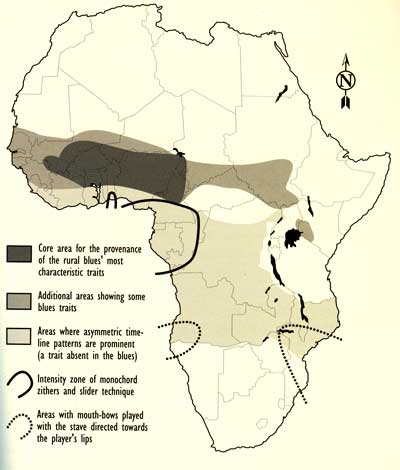
G.K: This map was designed to give readers an idea of the areas in Africa from which the rural blues’ most characteristic traits had come, including some less prominent areas, all part of a belt from Dakar in the west to the Nile River in southern Sudan in the east. By comparison, I was showing from which areas the knowledge of the asymmetric time-line patterns was exported to New World destinations, mainly from the Guinea coast—Congo, Angola, and the Zambezi Valley. Next, I was showing the areas within the west-central African Raffia zone were mono-ideochord zithers are played. These were relevant for the development of “jitterbug,” “diddly bow,” “unitar” and similar one string devices in the US. Finally, I was outlining the areas in South West and South East Africa where mouth bows are played with the stage directed toward the players lips, just like the tradition of the Appalachian Mountains.
B.E: What was the role of blackface minstrelsy in the emergence of African American music?
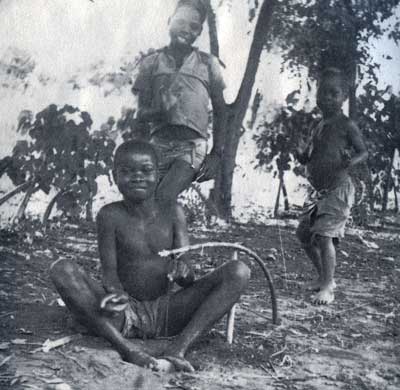
G.K: It was a factor that helped certain African traditions in the US context to survive. Although the intent of blackface minstrelsy was entertainment by making fun of the Negro, and thereby confirming existing stereotypes, it persuaded the European-American population to acknowledge some of the skills and the cultural existence of the Negro. The entertainers had to learn to act and to play like “blacks” in order to poke fun at them. But that was only the surface. Minstrelsy was based on a certain mind set of the colonial master. There was also a hidden psychological factor, namely that those blackface minstrels imitating what they thought was typical Negro behavior were satisfying a secret desire: to be like the Negro, if only for a few hours.
In places like colonial Rhodesia (now Zimbabwe), there was a comparable phenomenon in the 1950s, though the actors were African performers with Western education. They used to make fun out of the “uneducated” village African, by reenacting his English and the misunderstandings it caused. Hugh Tracey made some remarkable recordings.
B.E: You write about a tendency of “minority cultures” to takeover in the process of cultural competition. Explain that a little, and give an example.
G.K: I wanted to sketch out an experience by myself and many other cultural anthropologists, including France Boas, Melville J. Herskovitz etc., that it does not necessarily depend on the size of various groups to determine which culture, in a contact situation, eventually becomes dominant. This refers specifically to art. African-American musical styles, for example, have become the dominant popular expression worldwide from the 20th century into the 21st, certainly with local modifications and to those imposed by powerful commercial interest, and yet still recognizable as African-American. In terms of population, however, African-Americans are a minority.
B.E: You talk about heterophony as a common trait in African and African American music. What is it exactly?

G.K: Heterophony is a term used by comparative musicologists to describe the style of singing or instrumental performance in which melodic lines proceed strictly in unison, but with tolerance of minimal variation. Not all the singers sing exactly the same line, but vary it just a bit, simultaneously. The result is not chords, but often just brief dissonances or ornamentation by one participant over a stable note by the other. Heterophony can also be carried out instrumentally, or between a singer’s voice line and his own accompaniment on guitar, piano, any instrument. I think I once gave an example of some brass band music in New Orleans and also in West Africa, and in my book I was specifically referring to the relationship between some guitar melodic lines and the vocal line in Robert Belfour’s song, for example in “Poor Boy Long Away from Home.” Vocal lines and guitar lines often seem to duplicate each other, but not completely. There are simultaneous variations between the two without explicitly aiming at chord progressions. This is very common among Delta style blues musicians.
B.E: In your chapter about harmonic concepts, you write that the 1956 encounter between Louis Armstrong and ET Mensah was “a meeting of strangers.” What do you mean by that?
G.K: I mean that the two styles had developed from very different backgrounds. Armstrong’s New Orleans jazz was polyphonic in concept with interweaving parts of trumpet, clarinet and trombone. ET Mensah’s style on the other hand is very much based on the characteristic/homophonic multipart singing patterns, here instrumentalized, that are found in Fante music of Ghana. It is a different aesthetic. However, I would point out that if Louis Armstrong had met another Mensah in Ghana, namely Brookman Mensa who was recorded by my colleague Mose Yotamu in 1978 with his konkomba brass band, I think they could have played together, even if we take into account that Brookman Mensah’s music was cyclic, while Armstrong used jazz chorus form. Incidentally, Brookman Mensah was also from the Fante. This should warn us about that ethnicity. It does not necessarily explain style.

B.E: Your chapter on the blues tonal system is quite technical, but I might summarize it this way: the African Americans who created early blues vocals likely carried with them a memory of a harmonics-based pitch system, derived from the natural harmonic series. This system was at variance with the European, tempered scale, and the pitch areas of the most characteristic “blue notes” (Eb and Bb in the key of C) turn out to be places where the variation between these schemas is particularly significant and noticeable to the ear. Is that close?
G.K: I think your summary is fairly correct. Perhaps I can outline the origins of the blues tonal system without taking much resource to acoustics. Across the West African savanna you often find a characteristic pentatonic system. We discovered that it is generated from the use of harmonics up to the 9th, sometimes the 10th partial. That is this kind of the scale, from top to bottom:
D C Bb G E C
It is a so-called natural scale. It is slightly different from the notes found on European instruments with their tuning temperament. If you can construct the natural harmonic series over a fundamental you call see, the 5th partial will be a somewhat flat major third which we call E-386, and the 7th partial is indeed flat by 31 cents, we call it B-flat-969. It’s not nuclear physics, of course. Now B-flat-969 is the higher blue note. Next, if you transpose this West African savanna scale from the level of C to the level of F, the fifth down, or a fourth up (it doesn’t matter), you get this scale:
G F Eb C A F
Once again with two slightly flat intervals as compared with the notes of the Western tempered total system. And now comes the trick. If you integrate these two pentatonic columns, the basic form and the transposition, you get the common blues tonal scale, showing an interference pattern between the pitches of E-386 over C and E-flat-969 over F. That explains the fluctuating quality of the lower blue note.
It seems this integration was reached by African American musicians in the late 19th century when they were trying to align the tonality of field hollers, many of which are in savanna pentatonic system, with a guitar chord progressions they had learned. It then turned out to be possible to first back a field holler melody with the tonic chord (C) on the guitar, and then switch back to the sub dominant chord (F). But the dominant chord was alien to the new system, and therefore, as I mentioned, blues and jazz history is also the history of many temps to change it or substitute it.
Although the integration of two West African savanna pentatonic columns to form a joint system is the work of African American blues guitarists, there are in West Africa some antecedents. I am discussing one of them from Burkina Faso in a paper called “The African Matrix of Jazz Harmonic Practices” to be published in the Black Music Research Journal (Chicago). The other can be heard in a morning song I recorded in Cameroon in 1964, also among the Tikar people. Here, the solo singing woman is accompanied by one man playing a poly-ideochord stick zither, made of Raffia. The tuning of the 10 strings contains an interference pattern between the two adjacent nodes similar to E-386 and E-flat-969.
B.E: In Ed Bell’s “Mean Conductor Blues” you hear a cultural memory of an Arabic tonal system. Is that right?
G.K: In some way the origin of the third blue note [the sharp fourth, or flatted fifth has been a riddle. But the most likely explanation is that it comes from the auditory experience of a further extension upward of the natural harmonic series. Since the third blue note also occurs in the tuning patterns of some African instruments and vocal styles, notably in northern Mozambique and Central Tanzania, we believe it represents partial 11 of the natural harmonic series. That is a note at 551 cents, just halfway between F and F-sharp (over fundamental C). If that is true, then the term “flated fifth” would be a bit misleading. It is not in any way derived from a fifth. That third blue note occurs in some field hollars, and it is prominent in the music of many blues singers. Ed Bell who recorded in Chicago in September in 1927 is one of them.
B.E: The question of blues as a marketing concept aside, what do you personally hear in the music of Ali Farka Touré? How would you describe or analyze it in musical and stylistic terms?
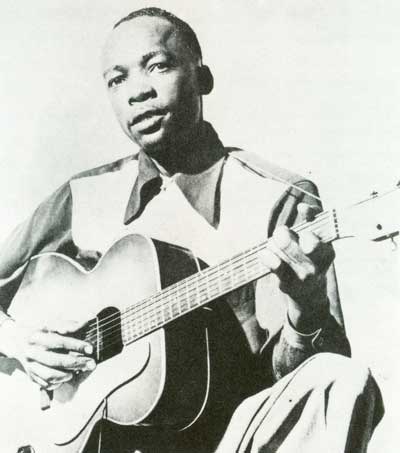
G.K: Well, we might go back to the start of Ali Farka Touré, in the 1960s in Paris. He was attracted by John Lee Hooker's blues, and so on, and French friends first persuaded him to recognize that there were similarities between his own guitar style, especially in songs a song in Songhai and Fulfulde, and blues tonality. That's usual. I have met many people who you play anything and they say it's the blues. You see? Everywhere in Europe, you can find such people. So in a sense, I believe that Ali Farka was pushed into this. In any case, he liked John Lee Hooker, and he began to work up to on integrating some of Hooker's melodies and so on into his own style.
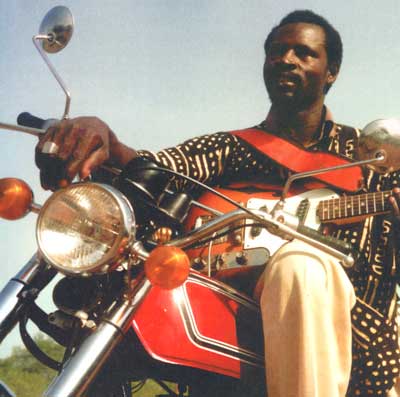
But looking at it from a wider perspective, one could also say that Ali Farka Touré was just one of many young men in Africa who, during the last 50, 60 years, have become interested in one or another form of African American music. For example in Congo, they were focusing on Cuban son, rumba. In South Africa, on swing jazz and bebop. And in West Africa, it was Calypso. There was a component in highlife of Calypso. Young musicians first try to emulate those styles, and later they develop something new, and that also happened to Ali Farka. Later, marketing people came and they tried to promote him on the basis that he represented history. He represented connections to the blues. He was the source. He was the roots, and so on, and so on. In the last years of his life, Ali Farka Touré began to reject these ideas, even. He was conscious of the rich tradition he was using in his own style and out of which he was developing something new. I mean, Ali Farka—it's late 20th century. It is not late 19th century.
B.E: You seem very concerned with correcting misconceptions about the blues and Africa. For example, you strongly counter those who point to I-IV-V chord progressions and use them to claim that blues is European, not African. You also take issue with Africans and others who try to claim the blues as soley theirs. In summary, what do you think is the right way for today’s lovers of blues music worldwide to conceptualize what is and is not African in the blues?
G.K: Frankly, I think the best way for a blues lover is to de-emotionalize one’s approach, and simply take each artist by their own merits. In historical studies we are, of course, concerned with unraveling and understanding what happened in the past. These studies have no other purpose. But they had better not be used to construct identities and put individuals into slots. If it is important for you to engage in the exercise of identifying “African” and “European” elements, then let me give you a doctor’s prescription. Listen to my good old friend Sinosi Mlendo, and try to construct what you think is “African” and what is “non-African” in his 12 bar “Madunda Blues,” composed in the remote living stone mountains of Southwest turn Tanzania in August 2003. I think you will get nowhere. It is a creative mix of his own personality. There is no one playing flute like that.
B.E: And individual creativity is, of course, what this story has been about all along. Thanks so much, Gerhard. I’ve enjoyed this.
G.K.: Thank you.










